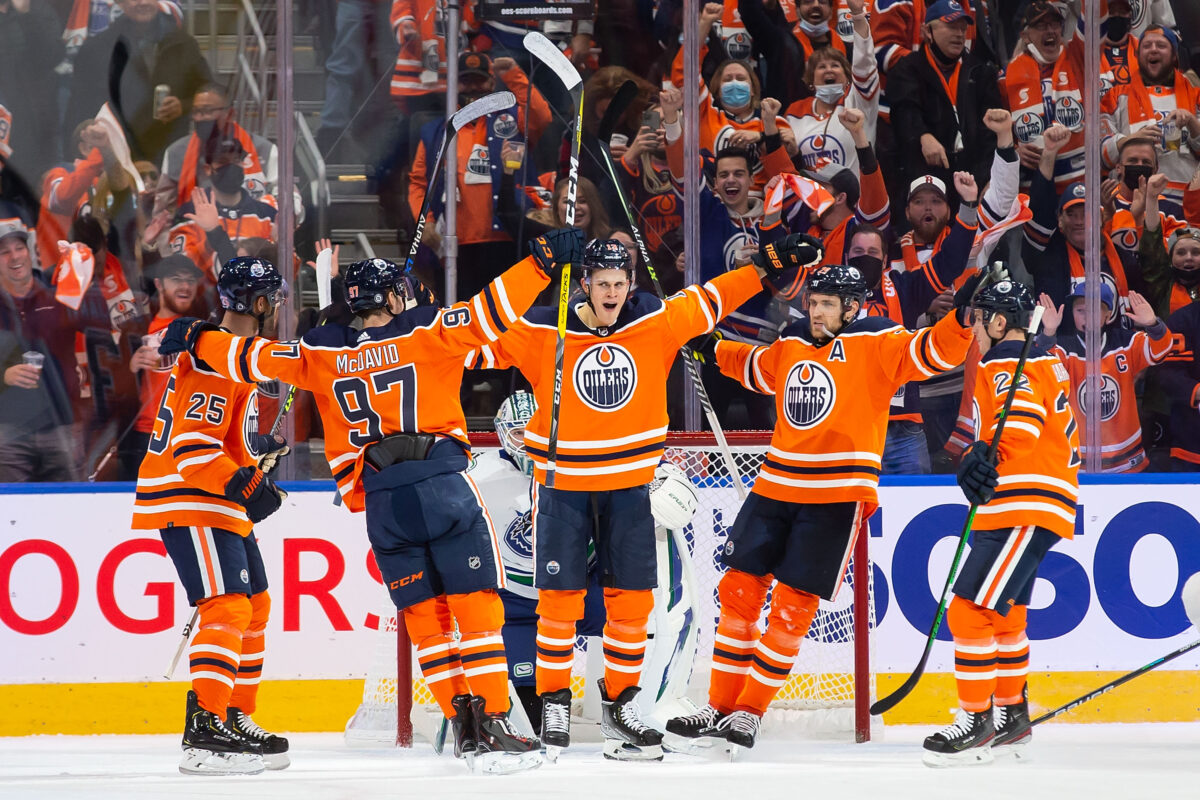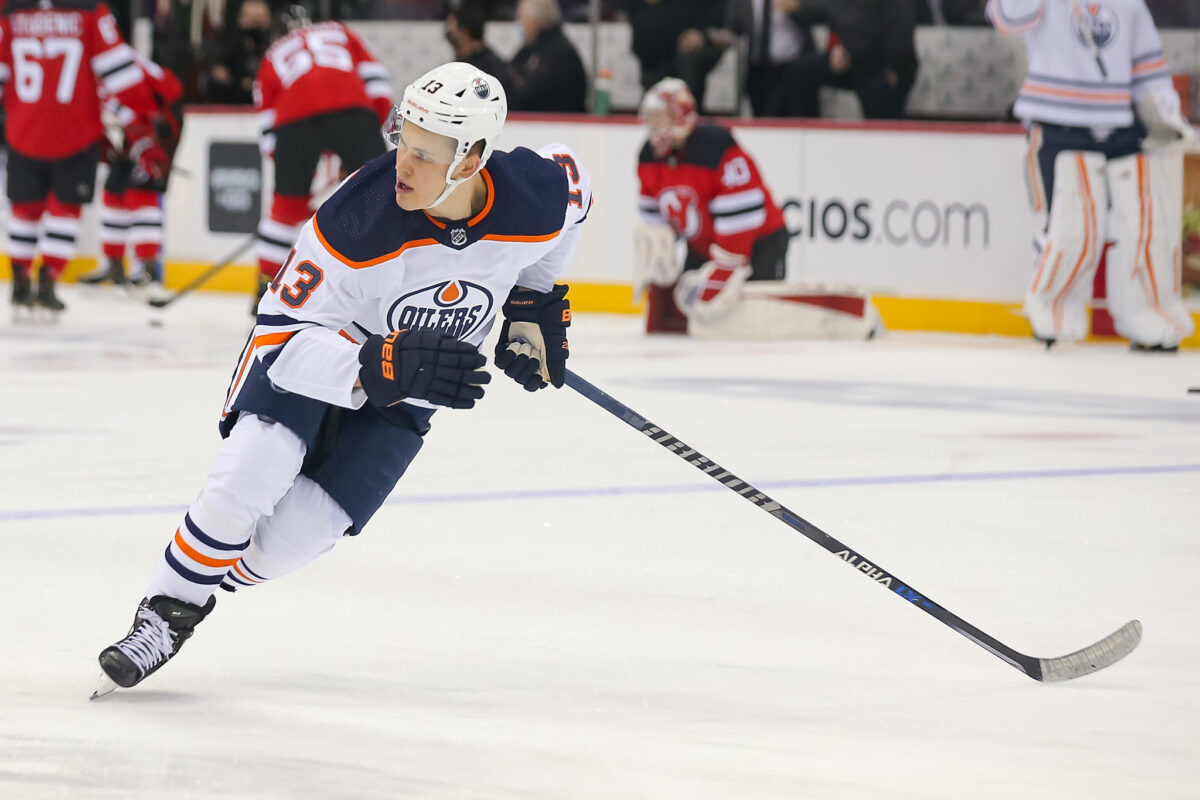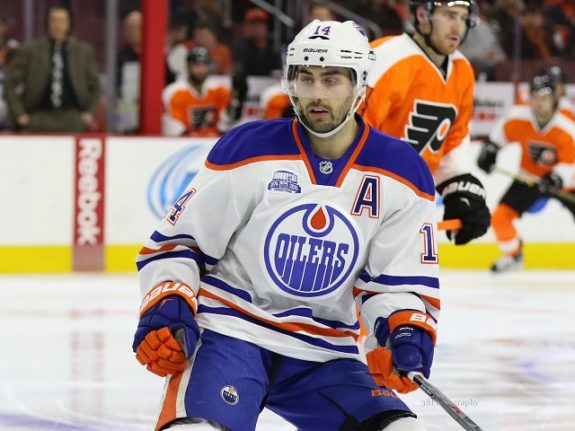Some players perform differently in the playoffs than in the regular season. It’s up to the general manager (GM) to decide how to manage these players. He can lock them up on deals or overreact; the Edmonton Oilers have done both in the past.
Taking into account the past moves made based on playoff performance, here’s a look at Jesse Puljujarvi and why GM Ken Holland shouldn’t let the playoff production of one of his young players force his hand into moving him too soon.
One Playoff Performance Doesn’t Make or Break a Career
Puljujarvi started the season playing very well and was building off of his successful return to the NHL in 2020-21. He was well on his way to setting new career-highs in goals and points after starting the 2021-22 season with six goals and 13 points in the first 11 games.
The Oilers were playing very well at the time, scoring at an extremely high rate at even strength and on the power play. Puljujarvi was in on the action, playing top-line minutes with Connor McDavid and newly acquired Zach Hyman. McDavid started the season on a 17-game point streak, which only helped Puljujarvi out.

Things started to slow down for Puljujarvi before he missed a month due to injury; he was snake-bitten and couldn’t seem to finish his plays after his return. In 19 games – from his return from injury to the end of the regular season – he scored two goals on 43 shots. He also recorded six assists, but those are bound to come when he’s his line’s puck-retriever, and he’s playing with the best player in the world (from, “Jesse Puljujarvi has it all as a Top 6 forward, except for one thing,” Edmonton Journal, 4/6/22).
All of Puljujarvi’s game wasn’t bad. His offence wasn’t bad. Head coach Jay Woodcroft talked about how he was always in the right position to score, and he would be worried if he didn’t find himself in those positions. The confidence will come back when he starts producing offensively, but he is doing things right.
You may also like:
- NHL Rumors: Maple Leafs, Kings, Oilers, Bruins
- 4 Current Oilers Stars Who Matched 4 Legends’ Stats vs. Kings
- 3 Keys to Series as Oilers Eliminate Kings in 5 Games
- Oilers Move On to 2nd Round After 4-3 Win Over Kings in Game 5
- Projected Lineups for the Kings vs Oilers – Game 5
Puljujarvi is good on both sides of the puck, even though he isn’t tasked with killing penalties since the Oilers have more than enough able bodies and good penalty killers. But he skated hard, had a good active stick, and was more than willing to go into the corners to free up the puck and help create turnovers in the offensive zone.
The Oilers were a little desperate after losing back-to-back games to the Los Angeles Kings in Round 1 of the playoffs, and Woodcroft decided to load up the top lines with players he thought would give the team the best shot at creating offence. That pushed Puljujarvi down to the bottom six, averaging under 10 minutes a night. Putting McDavid and Leon Draisaitl together was supposed to make the Oilers an offensive threat on every shift. If the third member of that line wasn’t able to finish plays and generate offence, keeping him there might have hurt the team’s chances of winning the series.

Puljujarvi still managed to score a goal and two points in seven games while playing as little as he did, but those points came in an 8-2 win in Game 3. However, he does a lot of good things away from the puck and shouldn’t be counted on to be a point-per-game player. The playoffs are far from over, and you never know when a line or production may run dry. A player like him should be given a chance in the top-six in an instant if that happens. Many expect him to be a game-changer every night, but he is making just $1.175 million this season.
Oilers Can Sign Puljujarvi for Cheaper Now
The Oilers are going to have difficulty signing Evander Kane, Kailer Yamamoto, Ryan McLeod, and Puljujarvi given their cap space and will have to make additional moves to get it done. A slump in a contract year when it doesn’t make a massive difference should be seen as a positive. Kane, Yamamoto, and McLeod are all playing well in the postseason and likely raising their stocks even more. Puljujarvi playing lower in the lineup and seeing a lot less ice time will be used in contract talks this summer as he is a restricted free agent.
Related: Oilers Can Re-Sign Kane, Puljujarvi, Yamamoto, & McLeod for 2022-23
Puljujarvi has hopefully learned his lesson from the last time he entered contract talks with the Oilers since they have a different general manager, and he is now more experienced. He knows his role and isn’t expecting anything before he has proven himself.
The Oilers would be unwise to let him walk, but after showing that he wasn’t able to sustain the offensive production for an entire season, they will be able to bring him back on a cheaper deal. This will benefit the organization if breaks out sooner than later, and depending on the term, management can give Puljujarvi another couple of years to prove what kind of complete player he can be before his next contract. This also allows the Oilers to bring back all four key forwards for next season.
Previous Overreaction From the Oilers
The last big overreaction by management came after the 2017 playoffs when former GM Peter Chiarelli traded Jordan Eberle after putting up two assists in 13 playoff games. It was Eberle’s first playoff appearance in his seventh NHL season and, looking back on it now, was definitely not warranted. Eberle went on to play postseason hockey in three of his four seasons with the New York Islanders and scored 13 goals and 34 points in 49 games while also producing in the regular season.

For many Oilers, it was the first taste of postseason action in their NHL career. Some stepped up, but others had a tougher time, including McDavid. Not to mention the team was starved for wingers, but Chiarelli decided to trade another one away. Taylor Hall was traded for Adam Larsson in the previous offseason, while another proven scoring winger in Eberle was dealt for an unproven young player, Ryan Strome.
The trade tree looks like this: Eberle turned into Strome, which saved the Oilers $3.5 million. Eberle was a five-time, 20-goal scorer and was on pace to reach 20 goals in his other two seasons if they hadn’t been cut short. Strome lasted just a season and a half in Edmonton before being traded for Ryan Spooner, who put up three points in 25 games before being traded again that season. The Oilers then traded Spooner for Sam Gagner, who found himself in a deal to acquire Andreas Athanasiou, who did next to nothing in his short stint in Edmonton before hitting the open market.
That just shows how one mistake or overreaction can spiral into years of struggle to correct it and recover. The Oilers have themselves a young and talented player in Puljujarvi with a lot of upside. It would be very bad to see him traded while his stock is a little lower just to watch him have a successful career somewhere else. The Oilers searched for years to bring together the impactful wingers they have on their roster today. They shouldn’t start sending them away too quickly.
